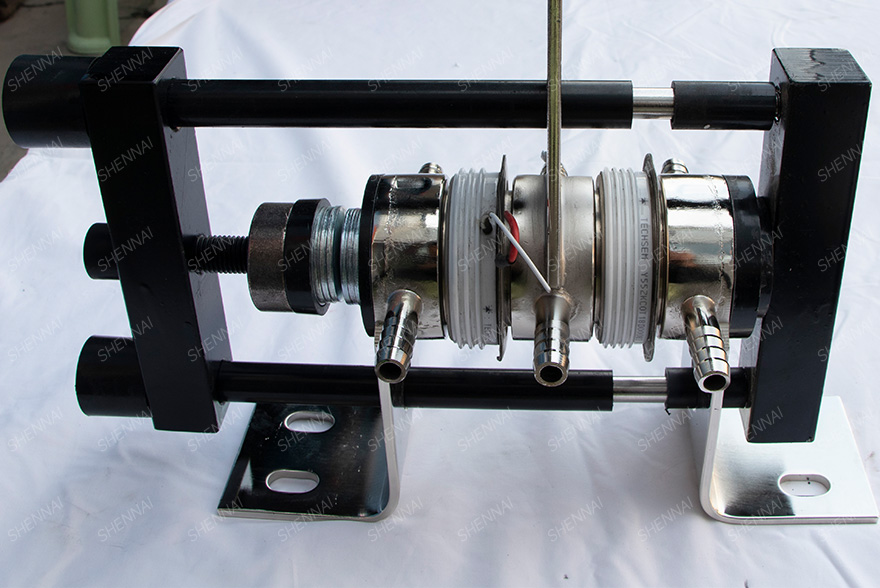- WhatsApp:008613838873707
- Email:[email protected]
FAQ

In the process of using the medium frequency furnace, the thyristor is often burnt, which often annoys the maintenance personnel of the medium frequency furnace and sometimes can not be solved. According to the maintenance records of the medium frequency furnace for many years, the sorted data are shown below for the reference of the maintenance personnel.
1. The water in the water cooling jacket of the inverter thyristor is cut off or the cooling effect is reduced - replace the water cooling jacket. Sometimes it is enough to observe the water output and pressure of the water-cooled jacket, but often due to water quality problems, a layer of scale is attached to the wall of the water-cooled jacket. Since scale is an object with poor thermal conductivity, although there is enough water flow, its heat dissipation effect is greatly reduced due to the isolation of scale. The judgment method is: operate the power at a power lower than the overcurrent value for about ten minutes, stop the machine quickly, touch the core of the thyristor quickly after the machine is stopped, and if you feel hot, the fault is caused by this reason.
2. There is poor contact and disconnection of the channel connecting wire - check the channel connecting wire and deal with it as appropriate according to the actual situation. When there is poor contact or disconnection of the connecting wire of the channel, the ignition will occur when the power rises to a certain value, which affects the normal operation of the equipment and thus leads to the protection action of the equipment. Sometimes, instantaneous overvoltage will be generated at both ends of the thyristor due to ignition. If the overvoltage protection action is too late, the thyristor element will be burnt. This phenomenon often causes overvoltage and overcurrent to act at the same time.
3. When the thyristor is decorrelated, the instantaneous burr voltage of the reverse voltage is too high - in the main circuit of the intermediate frequency power supply, the instantaneous reverse burr voltage is absorbed by resistance capacitance absorption. If the resistance and capacitor in the absorption circuit are open, the instantaneous inverting burr voltage will be too high and the thyristor will be burnt. In the case of power failure, use Wanxiu meter to measure the resistance value of the absorption resistance and the capacity of the absorption capacitance, and judge whether the resistance capacitance absorption circuit is faulty.
4. Reduced insulation of load to ground - the insulation of the load circuit is reduced, causing ignition between the load and the ground, interfering with the triggering time of the pulse or forming a high voltage at both ends of the thyristor, and burning the thyristor element.
5. Pulse trigger circuit fault - if the trigger pulse is suddenly lost during the operation of the equipment, it will cause open circuit of the inverter, generate high voltage at the output end of the intermediate frequency power supply, and burn out the thyristor. This kind of fault is generally the fault of inverter pulse formation and output circuit, which can be inspected by oscilloscope. It may also be the poor contact of inverter pulse lead. Shake the wire connector by hand to find out the fault location.
6. When the equipment is running, the load is in open circuit - when the equipment is running at high power, if the load is suddenly in open circuit state, a high voltage will be formed at the output end to burn out the thyristor.
7. Load short circuit during equipment operation - when the equipment is operating at high power, if the load is suddenly in short circuit state, there will be a large short-circuit current impact on the thyristor. If the overcurrent protection action is not less than the protection, the thyristor element will be burnt.
8. Protection system failure (protection failure) - whether the thyristor can be safe is mainly guaranteed by the protection system. If the protection system fails, the equipment is slightly abnormal, which will endanger the safety of the thyristor. Therefore, it is necessary to check the protection system when the thyristor is burnt out.
9. Failure of thyristor cooling system - the thyristor generates a lot of heat during operation, and it needs to be cooled to ensure normal operation. Generally, there are two ways to cool the thyristor: one is water cooling, and the other is air cooling. Water cooling is widely used, and air cooling is generally only used for power supply equipment below 100kW. Water pressure protection circuit is usually provided for medium frequency equipment with water cooling mode, but it is basically the protection of total water inflow. If there is water blockage in one circuit, it cannot be protected.
10. Reactor fault - the current on the inverter side is interrupted due to internal ignition of the reactor.